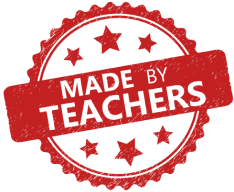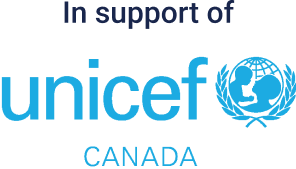Ontario Grade 9

Made by a Grade 9 teacher in Ontario.
Kids Boost Immunity (KBI) provides educational content (lessons and support materials) developed by teachers and where needed, health experts, that is directly linked to curriculum and is available completely for free. Each lesson is paired with an online quiz that students can take on a laptop, tablet, or phone. Every time a student scores 80% or higher on a quiz, we donate life-saving vaccines to UNICEF Canada. To learn more about KBI, click here.
Click on the overarching curriculum themes below to see the curriculum outcomes that match KBI educational content. The full Grade 9 Ontario Curriculum Connections document is here.
- Science
-
Curricular outcomes:
Science: STEM Skills & Connections
- A2.3- analyse how the development and application of science is economically, culturally, and socially contextualized, by investigating real-world issues
- A2.4- apply scientific literacy skills when investigating social and environmental issues that have personal, local, and/or global impacts
Science: Biology
- B1.1- assess impacts of climate change on the sustainability of local and global ecosystems, describe local or global initiatives for combatting climate change, and identify solutions to address some of the impacts
- B1.2- assess impacts of climate change on communities in Canada, including First Nations, Métis, and Inuit communities
- B2.1- investigate interactions between the biosphere, hydrosphere, lithosphere, and atmosphere, and explain why these interactions are important for ecosystem sustainability
- B2.4- investigate factors and processes, including biodiversity, air and water quality, soil health, and succession, and explain how they contribute to ecosystem sustainability
- B2.6- identify and use various indicators of climate change to describe the impacts of climate change on local and global ecosystems, and analyse how human activities contribute to climate change
Applicable KBI lessons:
1. Environment & Climate Change
- Literacy builder worksheet/answer guide
- Lesson worksheet/answers
- Video worksheet/answers
- Inquiry activities/answer guides
- Numeracy activity/answers
- Issues in Canadian Geography
-
Curricular outcomes:
Geography: Changing Populations
- D1.1- analyse the impact of selected population trends on people living in Canadian communities
- D1.2- identify global demographic disparities that are of concern to people living in Canada, and assess the roles of individuals, organizations, and governments in Canada in addressing them
- D2.1- identify factors that influence where immigrants settle in Canada, and assess the opportunities and challenges presented by immigration and cultural diversity in Canada
- D2.3- analyse social, political, and economic impacts of Canada’s immigration and refugee policies
Applicable KBI lessons:
1. Refugee Experiences
- Literacy builder worksheet/answer guide
- Lesson worksheet/answers
- English Language Arts (ELA)
-
Curricular outcomes:
Language: Literacy Connections & Applications
- A2.2- demonstrate an understanding of how to navigate online environments safely, manage their privacy, personal data, and security, and interact in a way that supports their well-being and that of others, including seeking appropriate permission
- A2.3- conduct research, considering accuracy, credibility, and perspectives, with a focus on misinformation, disinformation, and curated information, to construct knowledge, create texts, and demonstrate learning, while respecting legal and ethical considerations
- A2.4- evaluate the use of the various forms, conventions, and techniques of digital and media texts, consider the impact on the audience, and apply this understanding when analyzing and creating texts
- A2.5- demonstrate an understanding of the interrelationships between the form, message, and context of texts, the intended and unintended audience, and the purpose for production
Language: Comprehension
- C1.2- analyze a variety of text forms and genres, including cultural text forms, and explain how their characteristics help communicate meaning
- C1.3- analyze text patterns, such as cause and effect in an expository text, and text features, such as a bibliography and accessible fonts, associated with various text forms, including cultural texts, and explain how they help readers, listeners, and viewers understand the meaning
- C1.5- identify various elements of style in texts, including voice, word choice, word patterns, and sentence structure, and analyze how each element helps create meaning and is appropriate for the text form and genre
- C2.2- identify a variety of purposes for engaging with texts, select texts from diverse creators that are suitable for the purposes, and explain why the selections are appropriate
- C2.4- select suitable strategies, such as visualizing, reading ahead, asking questions, and consulting references and other texts or sources of information, to monitor and confirm their understanding of various texts and solve comprehension problems
- C3.5- explain explicit and implicit perspectives communicated in various texts, including narrative texts, provide any evidence that could suggest bias in these perspectives, and suggest ways to avoid any such bias
- C3.8- compare the critical thinking skills they used when analyzing and evaluating various texts, identify the skills that best supported their understanding, and explain why they were effective
Applicable KBI lessons:
1. Critical Thinking & Evaluating Information
- Literacy builder worksheet/answer guide
- Lesson worksheet/answers
- Video worksheet/answers
- Inquiry activities/answer guides
- Numeracy activity/answers
2. Navigating the World of Online (Mis)Information
- Inquiry activities




